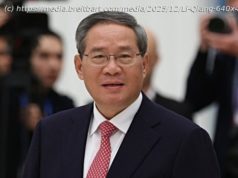Three continents, 60-plus countries and 30 per cent of the world’s gross domestic product – on the surface the numbers of China’s “Belt and Road Initiative” sound impressive….
Three continents, 60-plus countries and 30 per cent of the world’s gross domestic product – on the surface the numbers of China’s “Belt and Road Initiative” sound impressive. But when it comes to the projects that make up the modern-day take on ancient trade routes, there have been many bumps along the road. The first freight train completed its 12,000km, 18-day Silk Road journey from London in Britain to Yiwu, in Zhejiang province, last month. State media hailed the trip as a landmark achievement for the belt and road project. It’s hoped the route will improve trade ties between the two countries. The US$57 billion corridor to connect China’s western provinces to the sea via Pakistan’s Gwadar Port is the biggest project under the belt and road banner. It includes various projects such as the China-Pakistan highway, railways, pipelines and power lines. One key project is the US$1.65 billion Karot hydropower plant in Pakistan, which is sponsored by China Three Gorges Corporation, and is expected to help address power shortages in Pakistan. Stretching from Turkmenistan to Xinjiang, the 3,666km pipeline was built before the new Silk Road project but forms the backbone of infrastructure links between the two countries. The pipeline is Chinese-built and cost US$7.3 billion. The first freight train from China arrived in Tehran, Iran, last year, making the 10,400km journey in 14 days. Tehran hopes the rail services will turn the country into a major Eurasian trade hub. China has plans to turn Khorgos, in Xinjiang, on the border with Kazakhstan, into a major trade hub. Beijing aims to use the border city to link China with neighbouring Kazakhstan, and on to East Asia and Europe. According to reports, companies have been slow to move into the area, but they are starting to take notice of the remote city. Jiangsu province has agreed to plough more than US$600 million to help build logistics and industrial zones around Khorgas. Thailand and China have for years discussed plans for a major high-speed rail project, stretching 837km in total from southern China, through Laos, to Thailand’s east coast. Construction was due to start last year, but communication problems and financial and legal issues have stalled the 252.5km stretch between Bangkok and Nakhon Ratchasima, one of two routes that make up the US$5.17 billion project. The link is expected to be part of a plan to connect China to Southeast Asia through high-speed rail. A US$1.1 billion investment in Sri Lanka’s Colombo port has been delayed by legal and political obstacles in the country. Sri Lanka has also been slow to sign off on another understanding to develop a 60 sq km industrial zone in the area. Western countries have raised questions about the lack of transparency in the initiative and China’s broader motives. Very few Western leaders are expected to attend the belt and road summit in Beijing this month. Countries along the belt and road route also raise security concerns. The China-Pakistan Economic Corridor, for instance, runs through the disputed Kashmir region, which has prompted opposition from India. Other troubled areas along the route include Afghanistan, Myanmar, and even China’s own Xinjiang region.






